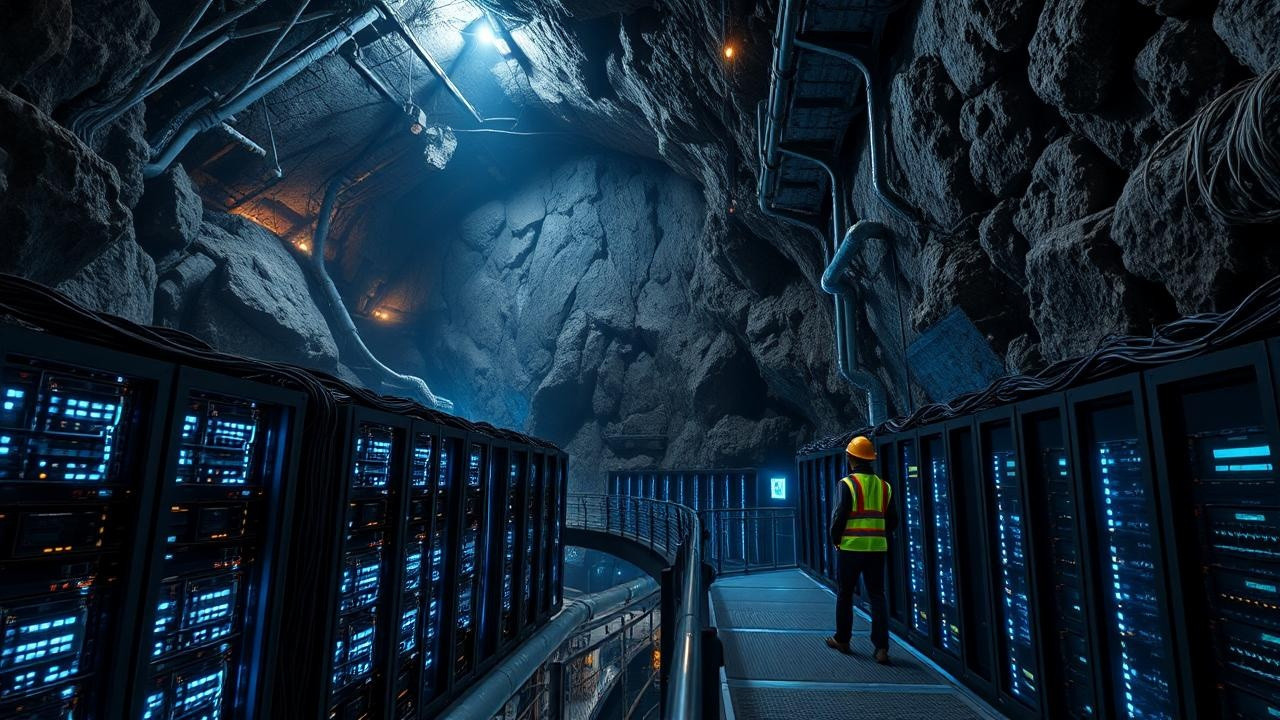Coal India Limited is exploring the establishment of data centers in its decommissioned mines, aiming to repurpose redundant assets and capitalize on India’s growing demand for digital infrastructure. A detailed feasibility study is underway to assess potential sites and analyze the data center industry, aligning with Digital India and Make in India initiatives. The final report is expected in FY26.
Breathing New Life into Old Mines: Coal India’s Bold Data Center Plan
Imagine a landscape dotted with abandoned coal mines, symbols of a bygone industrial era. Now, picture those same sites transformed into cutting-edge data centers, humming with digital activity and powering India’s growing tech industry. It sounds like something out of science fiction, but Coal India is turning this vision into a reality, spearheading an innovative approach to digital infrastructure and sustainability.
The government-owned coal mining giant is actively exploring the feasibility of establishing data centers within the premises of its closed mines. This isn’t just about repurposing land; it’s about leveraging existing infrastructure and resources to build a more sustainable and robust digital future for the nation. Why is Coal India, a company synonymous with fossil fuels, venturing into the world of data? The answer lies in a clever combination of necessity, opportunity, and a growing awareness of environmental responsibility.
Turning Brownfields Green (Digitally)
Closed coal mines often present significant environmental challenges. The land is often degraded, infrastructure lies dormant, and the local economy can suffer. Coal India’s initiative aims to address several of these issues simultaneously. By converting these sites into data centers, they can breathe new economic life into these areas, creating jobs in technology and related fields.
But the benefits extend beyond economics. Data centers require significant amounts of power and cooling. Coal India plans to explore renewable energy sources, such as solar power, to run these facilities, further reducing their carbon footprint. The presence of existing infrastructure, including power grids and water sources, can also significantly reduce the initial investment and construction time compared to building new data centers from scratch. This is particularly beneficial as India experiences rapid growth in data consumption.
Why Data Centers Need Sustainable Solutions
India’s digital economy is booming. From e-commerce and online education to cloud computing and artificial intelligence, the demand for data storage and processing is exploding. This surge in demand necessitates a massive expansion of data center infrastructure. However, traditional data centers are notorious energy hogs, consuming vast amounts of electricity and water, putting a strain on resources and contributing to greenhouse gas emissions.
Coal India’s initiative offers a compelling solution to this challenge. By repurposing existing sites and utilizing renewable energy, the company can significantly reduce the environmental impact of data center expansion, paving the way for a more sustainable digital future. This approach aligns with India’s broader commitment to climate action and its goal of achieving net-zero emissions by 2070.
Location, Location, Location: The Strategic Advantage
The location of these data centers within repurposed mine sites also offers a strategic advantage. Many of these mines are located in areas with relatively low population density, reducing the potential impact on residential areas. Moreover, the existing infrastructure, including road and rail networks, can facilitate the transportation of equipment and personnel. This strategic placement can also improve data latency for users in previously underserved regions, supporting broader digital inclusion. The project provides an opportunity to showcase the innovative data infrastructure solutions that can be achieved within India, driving further growth for the digital economy.

Overcoming Challenges
While the concept is promising, Coal India faces several challenges. The environmental conditions in and around closed coal mines can be harsh, requiring robust engineering solutions to ensure the reliability and longevity of the data center equipment. The company will also need to address potential concerns from local communities regarding noise pollution and visual impact. Rigorous environmental impact assessments and community engagement will be crucial for the project’s success.
Furthermore, attracting skilled personnel to these locations could prove challenging. Coal India will need to invest in training and development programs to equip local residents with the skills needed to operate and maintain these data centers. This investment in human capital will not only support the project but also contribute to the long-term economic development of these communities.
A Future Powered by Innovation
Coal India’s initiative represents a bold and innovative approach to addressing the challenges of digital infrastructure and sustainability. By transforming abandoned coal mines into thriving data centers, the company is not only creating new economic opportunities but also paving the way for a greener, more resilient digital future. The success of this project could serve as a model for other countries grappling with similar challenges, demonstrating the potential of repurposing industrial sites for sustainable development. This is just one part of a larger push to embrace the digital economy within India. See here for more on government initiatives. Ultimately, the project may prove to be a game-changer, positioning Coal India as a key player in India’s digital transformation while simultaneously contributing to a more sustainable future. This project truly breathes new life into previously abandoned locations.







